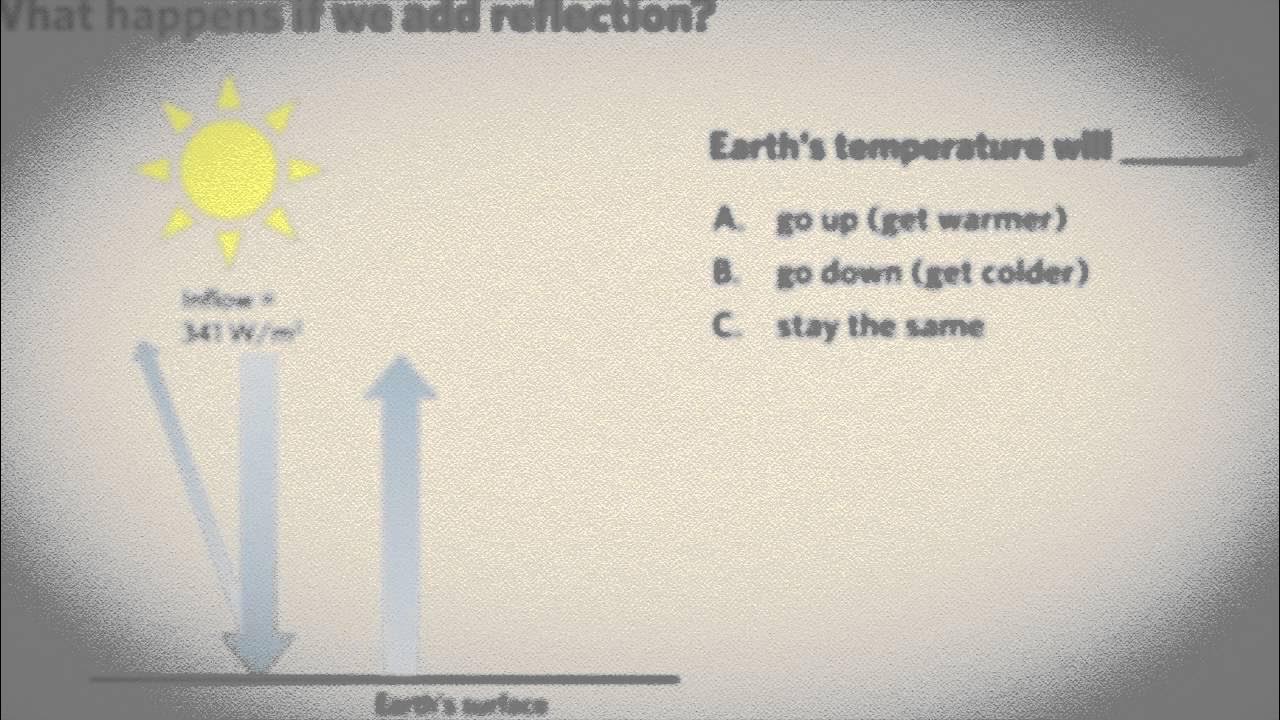Modeling Our Climate
Summary
TLDRThe video explains the importance and function of Global Climate Models (GCMs) in understanding Earth's climate system. GCMs are sophisticated computer models that simulate climate by dividing the Earth into grid boxes and calculating variables like temperature and humidity over time. By comparing model predictions with historical climate data, scientists have validated the role of human factors, such as greenhouse gas emissions, in climate change. Although models may not always predict outcomes accurately, their reliability over long timescales highlights the urgency of addressing climate change based on their forecasts.
Takeaways
- 🌍 GCMs (Global Climate Models) simplify the study of complex climate phenomena by creating representations of Earth's climate systems.
- 🗺️ Models can be static (like maps) or dynamic (like weather forecasts), and we encounter them daily in various forms.
- ☀️ GCMs simulate energy flow in the atmosphere, accounting for solar inputs, land and water interactions, and air mass movements.
- 📊 The Earth is divided into thousands of 3-D grid cells in GCMs, with each cell representing specific atmospheric variables like temperature and humidity.
- ⏳ Time in GCMs is divided into finite intervals, or time-steps, allowing for progressive climate calculations rather than large jumps.
- 🤝 GCMs have large time-scales, which enhance their reliability and robustness when making predictions about climate change.
- 📈 Testing GCMs against historical climate data has shown that including human factors significantly improves predictive accuracy.
- 🔍 Early GCMs predicted unexpected warming and cooling patterns, which were later verified by actual climate data from 1960 onwards.
- 🌱 Scientists attribute recent climate changes to human activities such as industrialization and deforestation, supported by GCM findings.
- 🔮 While no model is perfect, GCMs have repeatedly demonstrated their effectiveness in understanding and predicting climate change impacts.
Q & A
What is the purpose of using models in science?
-Models are used in science to simplify complex systems, making them easier to study and understand. They help recreate phenomena in a manageable way.
What are Global Climate Models (GCMs)?
-Global Climate Models (GCMs) are sophisticated computer algorithms that simulate the Earth's climate system using mathematical representations based on physical laws.
How do GCMs simulate the Earth's climate?
-GCMs divide the Earth into thousands of 3-D grid cells and simulate energy flow within these cells by accounting for various atmospheric variables like temperature, pressure, and humidity.
What advancements have improved GCMs in recent years?
-Advancements in computational power have allowed for smaller grid sizes and more accurate time-steps in GCMs, leading to more precise climate predictions.
Why are GCMs considered robust despite the complexity of their calculations?
-GCMs are considered robust because they operate over long time scales, allowing for reliable predictions that resemble statistical probabilities, much like the outcomes of multiple coin tosses.
How do scientists validate the accuracy of GCMs?
-Scientists validate GCMs by comparing the models' historical predictions against actual climate data, assessing their performance over decades.
What did the comparison between GCM predictions and historical data reveal about human impact on climate?
-The comparison showed that when human factors, such as greenhouse gas emissions, were included, GCM predictions closely matched observed climate changes, indicating a significant human impact on global warming.
What was one surprising prediction made by GCMs in the 1990s?
-One surprising prediction was that there would be rapid heating of the upper troposphere along with cooling of the lower stratosphere, which was later validated by real data.
What role do greenhouse gases play in the warming and cooling observed by GCMs?
-Greenhouse gases trap low-frequency radiation in the troposphere, causing unexpected warming in that layer and cooling in the stratosphere, as predicted by GCMs.
What is the significance of recognizing the predictions made by GCMs?
-Recognizing GCM predictions is crucial for understanding and addressing climate change, as they provide insights that can guide policy and action for a sustainable future.
Outlines

Cette section est réservée aux utilisateurs payants. Améliorez votre compte pour accéder à cette section.
Améliorer maintenantMindmap

Cette section est réservée aux utilisateurs payants. Améliorez votre compte pour accéder à cette section.
Améliorer maintenantKeywords

Cette section est réservée aux utilisateurs payants. Améliorez votre compte pour accéder à cette section.
Améliorer maintenantHighlights

Cette section est réservée aux utilisateurs payants. Améliorez votre compte pour accéder à cette section.
Améliorer maintenantTranscripts

Cette section est réservée aux utilisateurs payants. Améliorez votre compte pour accéder à cette section.
Améliorer maintenantVoir Plus de Vidéos Connexes
5.0 / 5 (0 votes)






